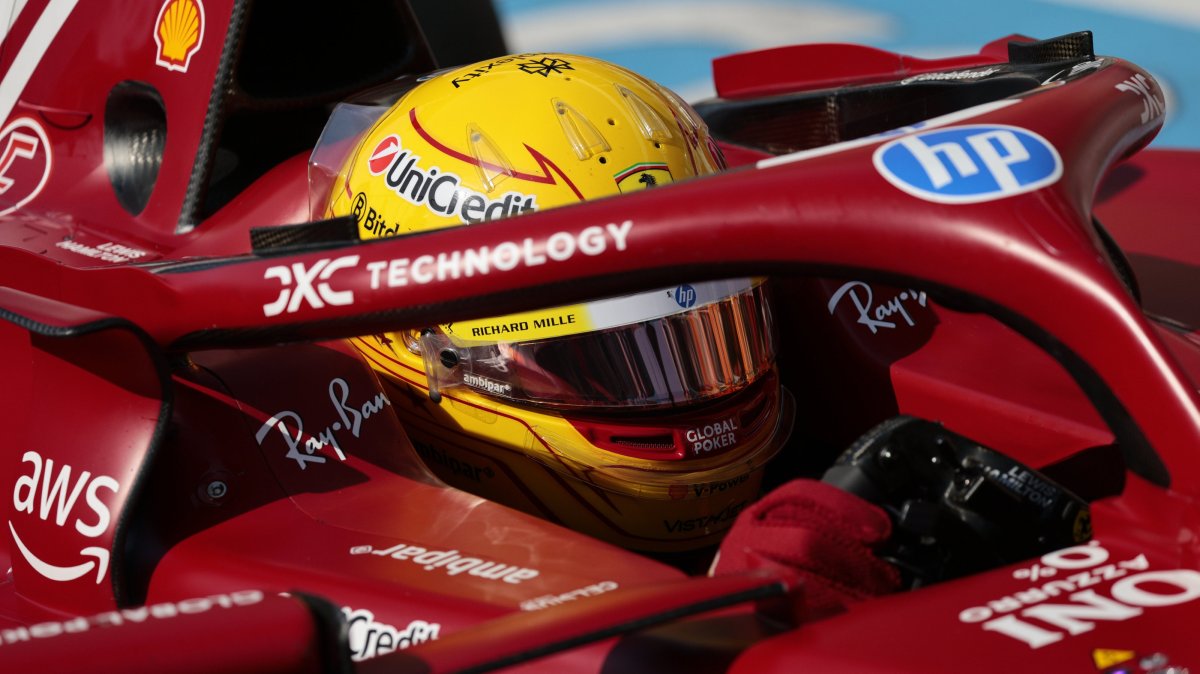What Happened
A new Formula One film, titled “F1,” starring Brad Pitt, is set to be released in the United Kingdom on June 25, 2025. The film has garnered attention not only for its star-studded cast but also for the involvement of seven-time world champion Lewis Hamilton, who serves as an executive producer and has played a significant role in shaping the film’s narrative and technical authenticity. Directed by Joseph Kosinski, known for “Top Gun: Maverick,” the film features Pitt as Sonny Hayes, a veteran driver returning to the F1 circuit after a long absence, alongside Damson Idris, who portrays his rookie teammate, Joshua Pearce.
Hamilton’s contributions to the film extend beyond mere production; he has been integral in ensuring that the racing elements depicted are realistic and resonate with both fans and newcomers to the sport. His insights have influenced various aspects of the film, including technical details and character motivations. The film aims to capture the essence of Formula One racing while appealing to a broader audience, particularly in the United States, where F1 has been working to increase its popularity.
Key Details
- Release Date: The film is scheduled for release in the UK on June 25, 2025, with a theatrical run before being available on Apple TV+.
- Cast: Brad Pitt stars as Sonny Hayes, and Damson Idris plays his teammate Joshua Pearce. Other notable actors include Javier Bardem and Kerry Condon.
- Production: The film reportedly cost over $200 million and involved filming at 14 actual F1 races during the 2023 and 2024 seasons.
- Technical Authenticity: Lewis Hamilton’s involvement has been pivotal in ensuring the film’s authenticity, with specific technical advice provided by him. For example, he advised on how a driver would handle blue flags during races.
- Filming Locations: The production team filmed at various F1 circuits around the world, capturing real race footage and utilizing advanced filming techniques to depict high-speed racing accurately.
Multiple Perspectives
The involvement of Lewis Hamilton has been widely praised, with many viewing his contributions as essential for the film’s authenticity. Joseph Kosinski has expressed that Hamilton’s insights provided a level of detail that would have been impossible to achieve otherwise. Hamilton himself has stated that he hopes the film will inspire a diverse audience to engage with the sport, particularly encouraging underrepresented groups to consider careers in motorsports.
On the other hand, some skepticism exists within the F1 community regarding the portrayal of the sport. Concerns have been raised about how the film might depict rivalries and the competitive nature of F1, with some team principals worried about being portrayed negatively. The filmmakers have acknowledged these concerns and have made efforts to balance the dramatic elements of the story with the realities of the sport.
Context & Background
The film “F1” is part of a broader trend of motorsport-themed films gaining popularity, particularly following the success of Netflix’s “Drive to Survive,” which has significantly increased interest in Formula One in the United States. The collaboration between Hollywood and the F1 community reflects an effort to bridge the gap between sports and entertainment, aiming to attract new fans and enhance the sport’s global appeal.
The film’s production has involved significant cooperation from F1 executives, including Stefano Domenicali, who has emphasized the importance of authenticity while also recognizing the potential for the film to introduce new audiences to the sport. This collaboration highlights the growing intersection of sports and media, where both industries seek to leverage each other’s strengths for mutual benefit.
What We Don’t Know Yet
While the film is set to release soon, there are still uncertainties regarding its reception among both F1 fans and the general public. It remains to be seen how effectively the film will balance the dramatic narrative with the technical realities of Formula One racing. Additionally, the long-term impact of the film on the sport’s popularity, particularly in the U.S. market, is yet to be determined.
Moreover, the film’s portrayal of competition and character dynamics may provoke varying interpretations among audiences, and it is unclear how these portrayals will be received by the racing community. As the release date approaches, further insights into audience reactions and critical reviews will provide a clearer picture of the film’s success and its implications for the future of Formula One in popular culture.




